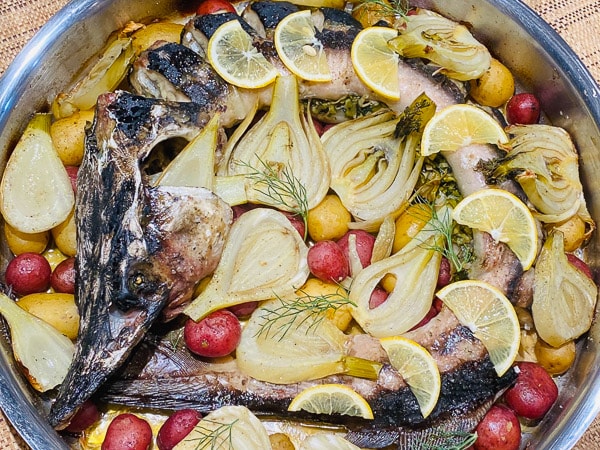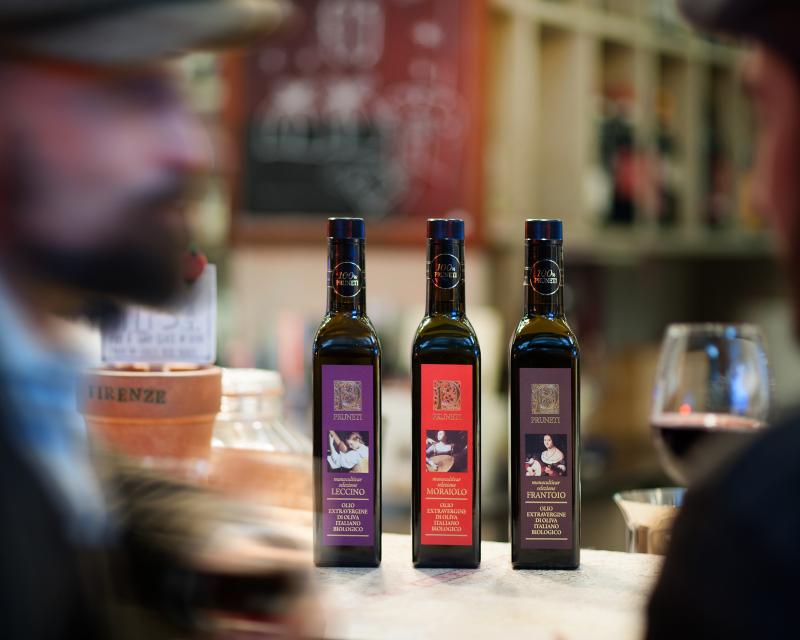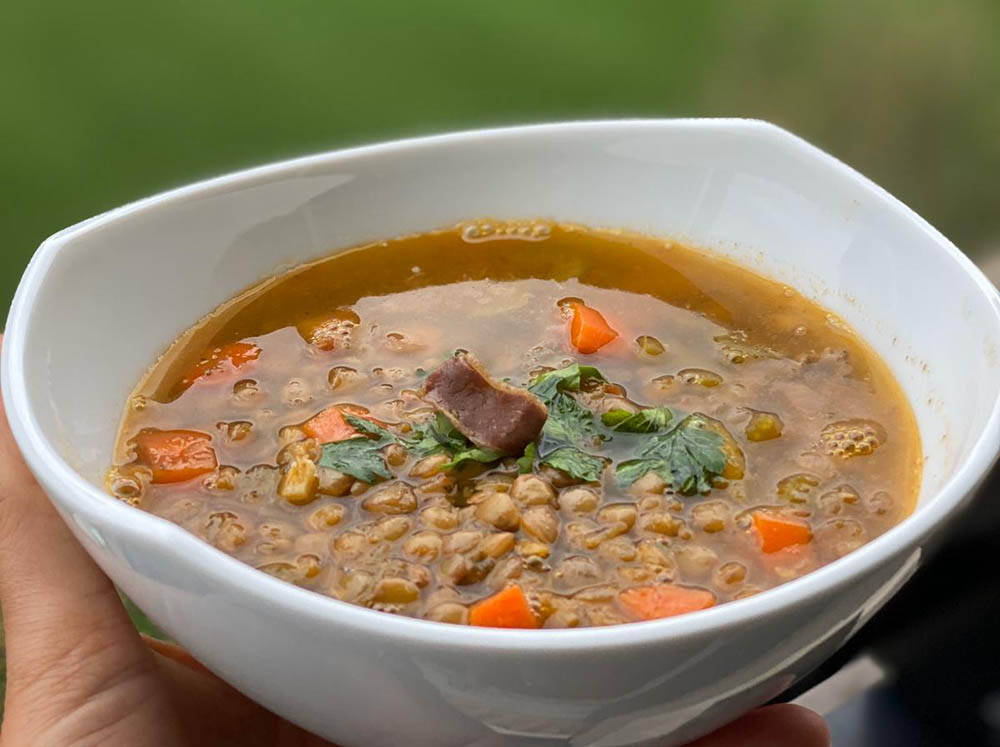Homey Hanukkah Recipes for Your Warmest Celebration in 2018
Chag Chanukah Sameach! Have a happy Hanukkah holiday!
This year the traditional Jewish festival begins at sunset on Sunday, December 2, and lasts until sunset on Monday, December 10. Even though we are observing Hanukkah in the first week of the winter, we can turn the eight-day celebration into the warmest time of the year.
Let’s see what we need for that.
The Grand Feast of Dedication Starts with a Small Family Party
Get your family menorah and nine candles. Find the dreidels you keep in a separate box since your childhood. Make sure that all your dearest and nearest will gather around the festive table to enjoy the celebration and reunion. Prepare memorable gifts for kids and adults. And plan the menu.
This is a brief holiday prep checklist.
Despite the fact that Hanukkah is a solemn religious holiday with a two-millennium history, the Jewish people celebrate it at homes, in a very quiet and cozy manner. Indeed, what can warm up the festive atmosphere better than sincere greetings, grandparents’ stories, kids’ laughter, menorah candles, and delicious family dinner?
What’s more, traditional Hanukkah foods have a deep symbolic meaning, which has derived from legendary historical events.
So anyway, your quiet family party will commemorate the great victory of oppressed Jews over ruling Greeks in the Maccabean Revolt in the 2nd century BC, along with the rededication of the Holy Temple in Jerusalem to the service of the Jewish G-d after Greeks used the Temple to sacrifice pigs to Zeus.
Strangely enough, the Hebrew Bible does not comprise the record about the successful battle of Judah Maccabee against Greeks. Neither does the Book tell the story about the rededication and miracle of the burning lamp the Jews were watching in the Temple.
After Judah’s people cleansed the Holy Temple, they wanted to light its menorah. But the cruse of oil they managed to find sufficed to keep the candles burning for only one day. Nonetheless, the Jews lit the menorah candles and watched them burn for eight days, until more oil was prepared.
Historians explain that rabbis didn’t include the stories about the victory and miracle to the Bible in order not to lose Roman support, which gave the Jews a big advantage in the fight against Greeks at the time. But whatever the true reasons were, for many centuries Hanukkah has remained the meaningful holiday of thanksgiving and praise to the Jewish people all around the world.
And this holiday is coming! Let’s see how to make your family celebration even warmer, cozier, and tastier. A few original Hanukkah recipes will definitely serve you in good stead.
Light the Candles. Eat the Candles
The beautiful homey tradition to light another menorah candle each day of the Hanukkah feast serves as a reminder of the miracle in the Holy Temple. Also, this tradition and its reference to the rededication gave Hanukkah one more name – the Festival of Lights.
When you light a candle, don’t you feel special vibes, as if you yourself created a little warm star? That is a very inspiring moment.
But what about making candles that your guests and you could eat? Let’s try to experiment.
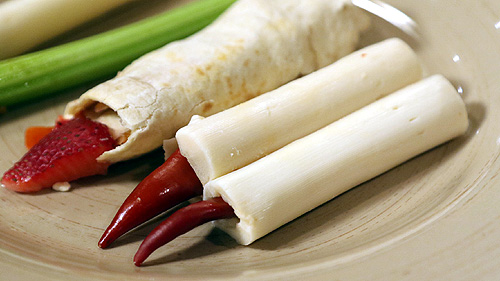
You will need:
- traditional crepes, pita, or tortillas
- olive oil
- marinated artichoke hearts
- dried red pepper or pimento
- your favorite filling (choose from hummus, salmon mousse, duck mousse, cream cheese, or chestnut spread).
Now cut the crepes (or the other dough you chose) into 4-inch squares, spray the squares with oil, and fry over medium heat for 25-30 sec. on each side. The dough shouldn’t become crispy.
Then spread the chosen fillings in the centers of dough squares and roll the squares into cylinders that look like candles. Add pepper or pimento to make flames and serve.
Go Creative with Traditional Latkes
The word “latke” is believed to come from the Yiddish language and mean “something little and oily.” No doubt, these little, oily, and crispy potato pancakes are must-cooks for a Hanukkah dinner. The legend has it that by serving them on the festive table, the Jewish people honor the oil miracle and the Maccabees who used the oil found in the Holy Temple to light the menorah.
Although nowadays hardly anyone can say what exactly the Maccabees ate, it is absolutely clear that the heroes didn’t eat potato latkes. Potato remained unknown to the Old World until the 16th century, when the first Spanish conquistadors brought the new vegetable from overseas.
In the late 18th century the potato literally saved the Jews in Eastern Europe from starvation, when grain harvests were failing massively. Since that time the Jewish people have come up with multiple potato dishes that are now considered traditional for Jewish cuisine. So it’s highly likely that the first potato latkes also appeared during those hungry years.
Surprisingly, original Hanukkah latkes might have been made from goat or sheep cheese and dough. Cheese became entwined into the history of Hanukkah because of a misinterpretation of the story about Judith. This young Jewish woman beheaded the Babylonian general after treating him to salty cheese and wine. The death of the general discouraged his army, and they left the Jews’ land.
Although the logical and temporal connection between Judith’s feat and the Maccabees’ victory still leaves much to question, it is obvious that cheese, oil, and potato helped the Jewish people more than once. So why not combine these two ingredients in your Hanukkah latkes this year?
Check and try out these ideas:
- potato latkes with grated Parmesan or Cheddar and garlic
- beet latkes with crumbled Feta
- sweet potato latkes with Ricotta, marshmallows and apple puree.
Upgrade the Beef Brisket
If your culinary preferences are liberal and you put up with the fact that the traditional main course can be slightly modified, even when it’s the holiday of Hanukkah, these upgrades for the beef brisket will be enticing for you.
Firstly, let’s take a look at several unusual but very successful flavor pairings. Beef always go well with:
- sun-dried tomatoes, peppercorns, and mustard
- mushrooms and soy sauce
- bacon and aged cheeses, like Parmesan or Pecorino
- even with pineapples and mangoes (or with pineapple and mango purees).
And if you’d like to garnish the brisket not with latkes but with something really special and memorable, this traditional Jewish kasha varnishkes will be the right option.
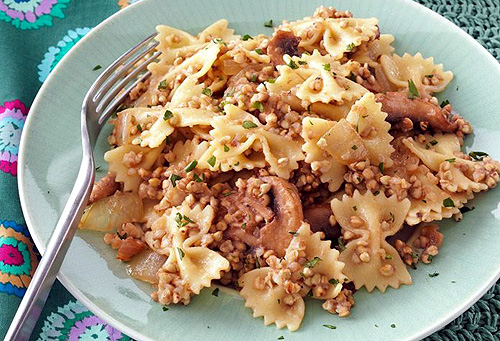
Check the ingredients:
- 1 c. roasted whole grain buckwheat groats (that is kasha)
- 4 c. bowtie pasta, uncooked
- 1 c. fresh mushrooms, sliced
- 2 large onions, chopped
- 2 c. chicken broth, heated
- 1 large egg, lightly beaten
- 2 tbsp. canola oil
- Fresh parsley, minced
- salt and pepper to taste.
Check the directions:
- While pasta is cooking, sauté mushrooms and onions in oil in a large skillet until they get brownish (about 10 min.). Remove the mixture from the skillet into a separate bowl.
- Combine kasha and egg in a bowl. Add the mixture to the same skillet. Cook over high heat until buckwheat gets brown, stirring occasionally and separating grains with the back of a spoon.
- Add hot broth, pepper, and salt. Bring to a boil. Add mushrooms and onions. Then reduce heat, cover the skillet, and simmer for 10-15 min., until the liquid gets absorbed.
- Add drained pasta to the skillet and heat through. Sprinkle with parsley.
- Serve warm and enjoy.
Pair Sufganiyots with Other Treats
Deep-fried, jelly-filled doughnuts, or sufganiyots, are another culinary reference to the miracle of oil in the Holy Temple. At the same time, blintzes or crepes with cream cheese and cherry jam may be considered as a reference to the story about Judith. Thus, this tender, creamy treat will be a perfect accompaniment to oily and slightly crispy sufganiyots.
Ironically, the word “sufganiyot” may have Greek origins. The Greek “sufan” means “spongy” or “fried.” On the other hand, the sweet treat is more likely to come from ancient Arabic cuisine, where it was known as “sfenj.” The sfenj also was a deep-fried doughnut which probably first spread across North Africa and then, around the 16th century, reached Southern and Central Europe. The Jewish people of those regions also liked the recipe. Polish Jews called the treat “ponchiks” and probably became the first to eat ponchiks on Hanukkah, passing the tradition to all Jewish people.
Yet, despite their twisted history and festive traditionalism, sufganiyots peacefully pair with other desserts, like blintzes, apple pies, or doughnuts.
Help yourself with the simplest last-minute doughnuts recipe to put the sweet and flavorful finishing touch to your Hanukkah dinner.
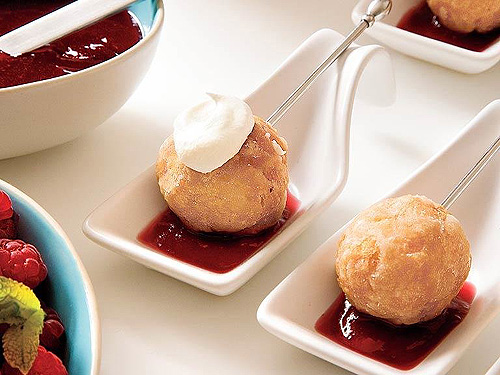
You will need:
- 4-5 dozen glazed yeast doughnut holes
- 1 jar raspberry, strawberry, or blueberry jam
- 4-5 tbsp. cream cheese
- 1/2 vanilla extract
- 2 tbsp. orange juice
- 1 tbsp. powdered sugar.
Here are the directions:
- Microwave jam in microwave-safe glass bowl for 45 sec., until jam gets warm and easy to stir. Add vanilla and orange juice. Put aside for 10 min., until the mixture thickens slightly.
- Whip cream cheese until it gets soft. Beat whipped cream cheese with an electric mixer at medium speed until cream cheese gets foamy. Gradually add powdered sugar and keep beating until soft peaks appear.
- Serve doughnut holes with fruit mixture and whipped cream cheese. Enjoy.
So, now you can tick the Hanukkah menu on your list. Your dearest and nearest are likely to keep abreast of your plan to throw a family dinner, but it will be a great idea to send invitations. Check if you still need to find nice presents. And remember to stock up on chocolate gelt, especially if you are going to welcome little guests.
Have a Happy and Warm Chanukah 2018!




